Nice Jumper Read online
About the Book
During the summer of 1988, something strange and disorientating happened to Tom Cox: he became a teenager. Then, something even stranger and even more disorientating happened: despite the best endeavours of his groovy, under-appreciated parents, regular exposure to music from an early age and a burgeoning fashion sense, Tom started to play golf. Lots of it.
Finding himself inexorably drawn to a world of male-bonding rituals and curious trousers, Tom resisted the temptations of conventional rock and roll revolution, opting instead to cut a swathe through the golfing establishment, unnerving his fellow players with his grungey music taste and games of Hide The Dead Rodent. On the golf course he felt at home and simultaneously somehow alienated. But Tom also wanted to be the best, taking five years out of normal adolescent existence to live, breathe, walk and talk nothing but the sport he loved.
Original, poignant and highly entertaining, Nice Jumper is a book about one teenager’s obsessive search for sporting nirvana in the wrong-coloured socks.
Contents
Cover
About the Book
Title Page
Dedication
Epigraph
A Confession
Chapter 1
Chapter 2
Chapter 3
Chapter 4
Chapter 5
Chapter 6
Chapter 7
Chapter 8
Chapter 9
Chapter 10
Chapter 11
Chapter 12
Chapter 13
Chapter 14
Chapter 15
Chapter 16
Chapter 17
Chapter 18
Epilogue
About the Author
Copyright
NICE JUMPER
Tom Cox
For Jo, Mick, Edie and AB
On the golf course as nowhere else, the tyranny of causality is suspended, and life is like a dream.
John Updike, 1973
Oi! Stop throwing tee pegs at my head!
Tom Cox, 1989
A Confession
As far back as I can remember, I never wanted to be a golfer.
I was born in Nottingham in May 1975, several miles from the nearest golf course, to parents who never thought to dress me in a miniature tartan cap and plus fours. My first word wasn’t ‘Carnoustie’, ‘fore!’ or ‘Nicklaus’, and as a toddler I didn’t pick up random gardening tools and swing them in the direction of makeshift flagsticks constructed from mop handles and discarded pants. The first record I bought was ABC’s Lexicon Of Love, an album which features an absolute lack of songs about pitching wedges, hanging lies or steep-faced bunkers. When the European Ryder Cup team made history by beating their American counterparts for the first time, in 1985, I was probably watching Cheggers Plays Pop on the other channel, having my life unchanged. I never met a distant uncle called Rex, who took me out to the local pitch and putt, loaned me his spare set of clubs and taught me words like ‘shank’ and ’mulligan’. I didn’t have a distant uncle called Rex.
If you had met my pre-pubescent self and asked me what I wanted to be when I grew up, I might have listed a fickle variety of occupations, ranging from Rock Star past Han Solo all the way to Willie Wonka. What I almost certainly would not have said was, ‘Seve Ballesteros.’ Amid the clutter of my parents’ well-thumbed paperbacks and hippie vinyl, you wouldn’t have found one errant ball marker, tee peg, or pitchmark repairer. Similarly, among the friends they knew from their teaching jobs and CND connections, you wouldn’t have found one set of Gore-Tex waterproofs or novelty St Andrews towels.
In fact, it is probable that at no point during the first thirteen years of my life was there even the most tenuous hint that I would one day stand upon a strip of immaculate, spongy grass in a pair of bad trousers, waggle a shoddy nine-iron and holler, ‘Yes! This is it! This is the answer!’
For golf and me, it really was this simple: one day we woke up and found ourselves utterly, inexplicably in love.
Between the summer of 1988 and the summer of 1993 – a period that encompasses the peak years of my adolescence – I played golf virtually every day, usually all day. Without warning, the game seemed to metamorphose from some stupid old man’s pastime that occasionally mucked up the scheduling of Saturday morning kids’ telly, to the core of my very being. I didn’t stop to question this at the time. It simply happened, as if it was another part of the inexorable, disorientating onset of puberty. The only difference between golf and nocturnal emissions was that nobody sat me down for a quiet chat and warned me about golf.
I didn’t just play golf; I dreamed, walked and talked it. When I was forced to accompany my parents on a family hiking expedition, I didn’t amuse myself by playing air guitar; I did it by playing air five-iron. When I was cajoled into visiting relatives, I made use of the time by examining their garden for contours, texture and speed, while my somewhat embarrassed mum explained to a befuddled aunt or grandparent that I was ‘reading’ their lawn.
Every life lesson had a golfing metaphor, the key to a balanced teenage existence no more important than the key to a dependable swing plane. I evaluated complete strangers, friends and family members in terms of their potential backswing, not their personality. Anyone who didn’t play my favourite sport seemed to me a slightly lost, inferior being. I shut out art, culture, music, literature and school work. I faked migraines in order to miss second-period Geography and catch the early stages of the Dunhill British Masters. I recorded every moment of every terrestrially televised golf tournament. I made wallcharts, on which I recorded every round I played, every fairway I split, every green I hit in regulation, adhering exactingly to the blue-for-under-par, red-for-over-par code employed by the BBC. I was in a zone of my own, and nobody who knew me outside the context of golf knew quite what to do with me.
For more than four years, I devoted every fibre of my being to becoming East Midlands’ answer to Lee Trevino. At night, when the golf course was closed and my classmates were at the school disco, I was in my back garden, uprooting clods of earth and psychotically checking the shoulder turn of my reflection in the kitchen window, or in my bedroom memorizing every winner of golf’s four major championships since what, for me, was the dawn of history (what was the point of acknowledging life before golf?). On my bedroom wall, where there had once been pop posters cut meticulously from Smash Hits magazine, there hung a collage of photographs featuring Tom Watson and Greg Norman in midswing, made up from the pages of Golf Monthly, Today’s Golfer and Golf World.
On my final-year report card for GCSE Biology, it says this: ‘Tom has no interest in this subject because he “wants to be a professional golfer”.’ I didn’t take this as sarcasm; I took it as a stone fact. I daydreamed away my school life doodling dogleg par fours in the margins of my exercise books, in the precise place where decades of classroom tradition held that I should be doodling hideously deformed genitals. If I saw a girl I fancied, I didn’t wonder if she’d let me take her behind the bike sheds; I wondered if she’d let me take her up to the driving range. I wasn’t popular or swotty or nerdy; I was just ‘that kid who plays golf’. Yet golf probably did more damage to my exam results than drugs, drink, crime and sex could have done with one gargantuan combined effort.
It’s painful enough to have acne, girls, hormones and bad taste to deal with. I had all this, and golf. Within the rigid boundaries of a private golf club, with all its scientifically questionable dress codes and arcane customs, I was expected not only to deal with the conflicting hopes and desires of a teenage psyche, but also to form some kind of sociably pliable character, fit to see me through the trials of adulthood. This is the place where I grew my hair, shoplifted, violated a wheelie bin, wore the wrong-col
oured socks, smashed windows, set fire to a close friend and got admonished for hiding in a bush. This, in short, is where I spent the most pivotal period of my life.
And I’ve spent the last eight years pretending it wasn’t.
This book is firstly a confession and secondly a personal investigation. There are people with whom I’ve built close relationships who will read it and feel shocked and compelled to re-evaluate my worth as a friend and human being. Even my wife, who knows me best, and my parents, who saw the whole sorry episode close up, will recoil, stunned and double-crossed, from much of the information within. But nobody, perhaps, will be as surprised as me.
Over the years, I’ve been consistently amazed at the ease with which I’ve been able to edit my own past. When I stopped playing golf, in July 1993, my life resumed its course more or less as originally ordained. I fronted a diabolical, unsuccessful punk rock band for a short time and dressed in shapeless clothes, as you might have expected a kid with left-wing, arty parents to do. I eventually and inescapably adopted the musical taste of the people I grew up with, as you might expect of someone who’d been weaned to the sound of Neil Young’s After The Goldrush. And, although I failed miserably in my mission to become a leather-trousered intergalactic chocolate-factory-owning pin-up, I started to make a living by writing about rock music, which turned out to be a satisfying enough second best to actually making the stuff.
The fact is, if you take the first thirteen years of my life and sew them to the last eight, it makes a pretty seamless whole. Unlike my clandestine stash of golf photos where, leaning rakishly on my putter in pleated slacks, I look an entirely different species, the pictures of pre-teen me depict a smaller, unsideburned version of 26-year-old me. Hence these are what I carry around in my mind as the Truth; these are what I display to the world, if it happens to be paying attention at the time. Most of the friends who witnessed my golfing aberration have drifted away or been conveniently compartmentalized, so I haven’t got anyone to snitch on me. Obviously I’ve been required to brush up on my knowledge of the watershed moments of late eighties and early nineties popular culture (not something that required any significant amount of time or intellectual strain), but, on the whole, deleting almost five years from my life has involved remarkably little ground-work. I don’t even feel like I’m covering anything up any more. It’s got to the stage where I’ve got myself convinced almost as thoroughly as everyone else that I had a normal adolescence.
So why dredge up the awful truth?
There are four main reasons, I think, why I have to write about my experience as a teenage golf nut. The first is exactly what I’ve just said: that I can feel it slipping away from me. I half wonder if it happened to me at all. Will it disappear into the dustbin of personal history if I don’t write it down for posterity?
The second is the Dream. I’ve been having the Dream ever since I terminated my mission to be the world’s best golfer, and for every year I put between myself and my golf life, it intensifies. In recent months, it’s become unbearable.
The Dream begins with a squall of feedback. It’s always the same: I think I’m at a rock concert, only to turn round and realize the noise is coming from a microphone set up on the first tee of a golf course. A throat clears and a voice pipes up, the flavour of fake leather upholstery and pipe smoke.
‘On the tee, representing Cripsley Edge Golf Club: Tom Cox!’
Polite applause pitter-patters around me and I slide my driver out of my bag. The place is almost familiar – an amalgam of three or four great courses I competed on as a teenager. Suddenly, as I sink my wooden tee peg into the ground and position a brand new balata-covered golf ball on top of it, I’m struck by the sensation that this is the most important tournament of my life. All around me, spectators – thirty or forty of them at least, none of whom ever have faces – hold their breath, and I begin my backswing, coiling my shoulder muscles for a powerful shot.
The ball falls off the tee peg.
I repeat this series of actions numerous times – anywhere between fifty and a hundred on a bad night – but the ball never stays on its perch long enough for me to complete my stroke. I hear mumbling from behind the tee where my playing partners, who have both bisected the fairway, are loitering. Palms clamming up, I bend down to examine the tee peg, to find that the bottom of the peg is round, while the hole beneath it is square, making the fit impossible. At this point I wake up, feeling frustrated and demented.
After eight years of living under its tyranny, I’ve begun to look at the Dream like this: I either exorcize it by writing a book, or find a good psychiatrist.
The third reason for writing this book is connected with a phenomenon I’ve noticed enveloping me as I’ve passed into the second half of my twenties: a kind of crisis of cultural faith, involving a re-evaluation of the things I’ve held to be ‘credible’ for my entire adult life. You could say the process started some time back when I traded in a neglected pile of lo-fidelity seven-inch singles for my first Eagles album, moved on a pace when I found myself clearing out my wallet and replacing my membership card for Hothips Nightclub with a supermarket loyalty card, and slipped smoothly into fourth gear around the time I found myself wandering about the house in a pair of Totes wondering why all radio stations couldn’t be as sensible and informative as Radio 4. Now I’m bracing myself for the next stage.
Am I about to realize that golf is cool?
Moreover, would this necessarily be a bad thing? Ironically enough, in the years since I abandoned golf in favour of rock and roll, there have been a glut of ‘golf gets hip’ features in the British broadsheet newspapers, suggesting that, in the aftermath of Tiger Woods, Burberry street fashion, rock-and-roll golfers such as John Daly and golfing rock-and-rollers such as Alice Cooper, golf is becoming less bourgeois, more working class, more open-minded. I’m not wholly convinced this is true – the last time I spent any time within its iron borders, the golfing establishment had at least a hundred years of evolution to go through before it attained what most fashion editors and cultural commentators would define as ‘cool’ – but something, certainly, has changed. In chic secondhand shops and boutiques, eighties Pringle sweaters sell for upwards of forty pounds. Acquaintances of mine speak brazenly of weekend trips to the local pitch and putt. For the first time, I almost feel like it’s safe to hold up my head among normal human beings who have never taken a free drop from Ground Under Repair or shown consideration for a dress code, and announce: ‘Yes! I once wore a ridiculous hat and a left-handed glove! And if you have a problem with that we can settle it outside!’ During the conception of this book, I had the unique experience of meeting an ex-greenkeeper at a night of psychedelic folk music in central London, who revealed to me over the course of an unusually passionate two-hour conversation that he, too, had once been a promising amateur golfer, and still covertly believed that ‘golf holds the key to existential and spiritual peace’. Could there really be more out there like me, hiding their secret histories from the world? It’s possible.
Nevertheless, by owning up to a golfing past, I realize I’m putting myself at risk. After all, I’m telling people that I used to play golf, when I was supposed to be getting hip, not that I want to play golf now, when I’m supposed to be getting boring. There’s a big difference. Alice Cooper might spend his leisure time working on his pitch and run shots now. But did he do the same thing as a teenager? Of course he didn’t. He was much too busy corrupting his classmates or teaching himself the art of cracking a whip and singing with an eight-foot-long python around his neck.
I fully grasp that, to many, the words ‘golf’ and ’credibility’ are still approximately as compatible as the words ‘Thatcher’ and ‘breakbeat’. A book seems the least painful way to put my confession out there – a method, at the very least, of sidestepping those incredulous stares and that special tone of questioning that’s normally reserved for such tentative enquiries as, ‘So. At what point exactly did you enrol at the nunn
ery?’ and, ‘Precisely what kind of burning ambition drives the collector of rare Nazi memorabilia?’ On the few occasions that I have chosen to disclose my golf life in public, I’ve regretted it.
‘You? A former amateur golfing prodigy?’
‘Yes.’
‘You’re winding me up!’
‘No, honestly, I’m not.’
‘But you like After The Goldrush!’
‘That’s true.’
‘Did your parents play golf?’
‘No. Could you keep your voice down, please?’
‘What about the rest of your family?’
‘No. Nobody.’
‘So what made you take it up?’
‘I don’t know. It’s a long story.’
‘But I thought everyone who played golf was a right-wing bigot with no dress sense!’
‘Not everyone.’
‘Wow! You? I mean, I never would have guessed it, what with those sideburns and everything. Hey! You lot! Yeah, that’s right – you over there, the coach party of impossibly gorgeous, trendy and intelligent fashion models! Come here. You’ll never believe this. Guess what? My mate Tom took five years out of a normal teenage life just so he could hit a little white ball around a field with a big metal stick! For no apparent reason! And guess what else? The whole time, he didn’t do any rude or sexy stuff with a girl, not once.’
If it comes down to a choice between the written word and a packed Soho bar, I’ll take the coward’s option every time.
Yet, simultaneously, I wonder if the written way isn’t the most frightening way of all. I’m not just composing a teenage memoir here; I’m opening up the gates to a life that stopped feeling like my own several aeons ago, but which, at the same time, despite everything I’ve told myself in the past, might be the same life that formed a vast part of who I am. Once I begin coming clean, I wonder what kind of terrifying personal truths I might uncover. I embark on this mission fully aware that when it’s over I probably won’t be the same person I was when it began, and that I have no way of predicting the extent of the changes that might take place. Similarly, I’m conscious that while the first three reasons for writing about my life as a teen golf alien are logical and persuasive enough, it’s the fourth and final reason that’s the most visceral and dangerous.

 Ring the Hill
Ring the Hill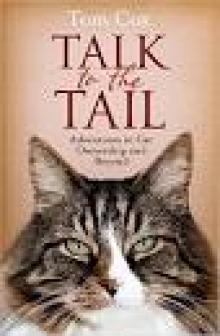 Talk to the Tail
Talk to the Tail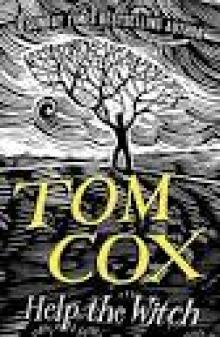 Help the Witch
Help the Witch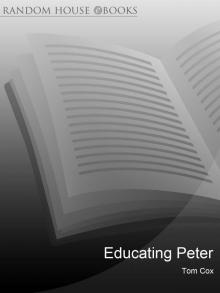 Educating Peter
Educating Peter Nice Jumper
Nice Jumper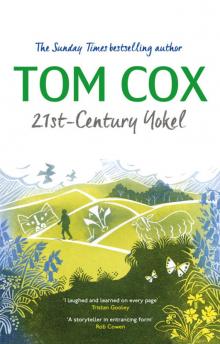 21st-Century Yokel
21st-Century Yokel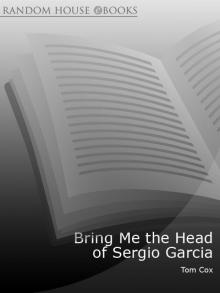 Bring Me the Head of Sergio Garcia
Bring Me the Head of Sergio Garcia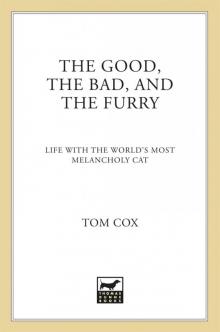 The Good, the Bad, and the Furry
The Good, the Bad, and the Furry